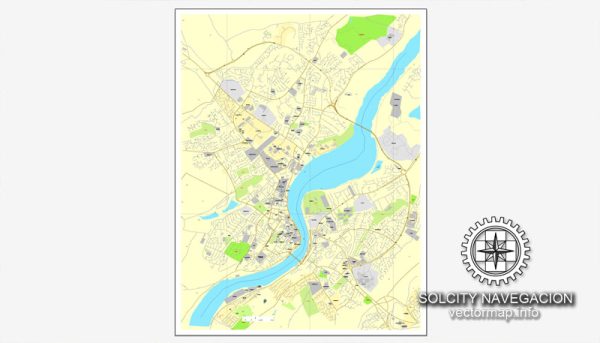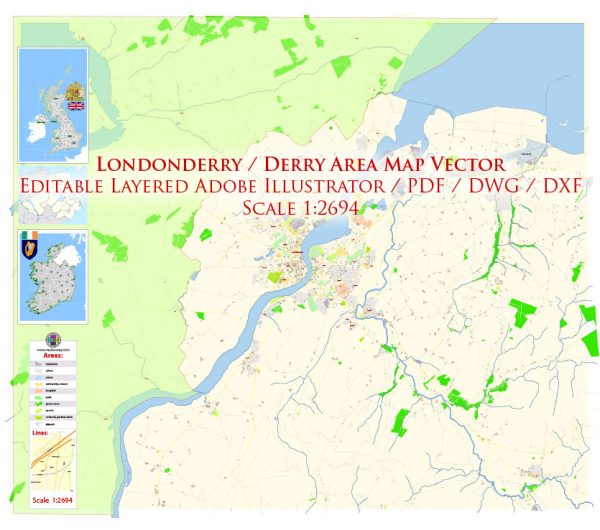The city now officially known as Derry, but often referred to as Londonderry, is located in Northern Ireland. The history of its urban development is complex and closely tied to the broader historical and political context of Ireland.
- Early History: The area around Derry has a rich history dating back to ancient times. It was originally settled by Celtic tribes and later became an important monastic center under St. Columba in the 6th century. The city’s strategic location along the River Foyle contributed to its significance.
- Plantation of Ulster (17th Century): One of the most significant events in Derry’s history was the Plantation of Ulster in the early 17th century. The city was granted to the City of London in 1613, and this is where the prefix “Londonderry” originates. The purpose of the plantation was to establish a Protestant majority in Ulster, which had a predominantly Catholic population. The building of the city walls, completed in 1619, is a lasting symbol of this period.
- Sieges of Derry (1689): The late 17th century saw the city play a crucial role in the Williamite War in Ireland. Derry withstood a 105-day siege in 1689, a key event in Irish history. The Apprentice Boys’ March commemorates the young apprentices who closed the city gates, leading to the siege.
- 18th and 19th Centuries: In the 18th and 19th centuries, Derry continued to grow as a port and a center of commerce. The shirt industry became a major economic force, and the city expanded beyond its walls. The construction of the Craigavon Bridge in 1933 further facilitated development by connecting the Waterside area with the city center.
- 20th Century Troubles: The latter half of the 20th century brought significant challenges to Derry. The city was deeply affected by the period of sectarian conflict known as “The Troubles” (late 1960s to 1998). Derry witnessed some of the most notable events of this conflict, including Bloody Sunday in 1972 when British soldiers shot unarmed civil rights protesters.
- Peace Process and Post-Troubles Era: The signing of the Good Friday Agreement in 1998 marked the beginning of a more peaceful era. Derry has since undergone efforts at urban regeneration and reconciliation. The city has sought to overcome the economic and social challenges left by the conflict, focusing on cultural and tourism initiatives.
- Cultural Significance: Derry has a vibrant cultural scene, and in 2013, it was designated the UK City of Culture. This designation aimed to showcase the city’s cultural heritage and promote economic and social regeneration.
Today, Derry is a city with a complex and multifaceted history, and its urban development reflects the various influences and challenges it has faced over the centuries. The city is striving to move forward, embracing its rich cultural heritage while building a more inclusive and prosperous future.



 Author: Kirill Shrayber, Ph.D.
Author: Kirill Shrayber, Ph.D.